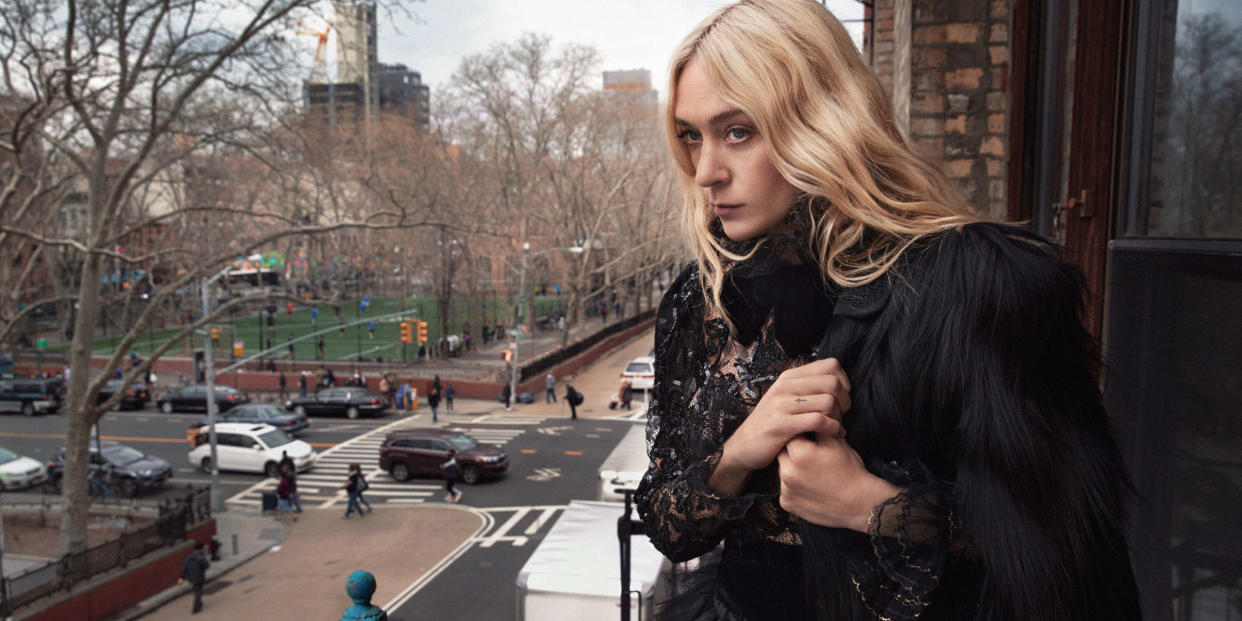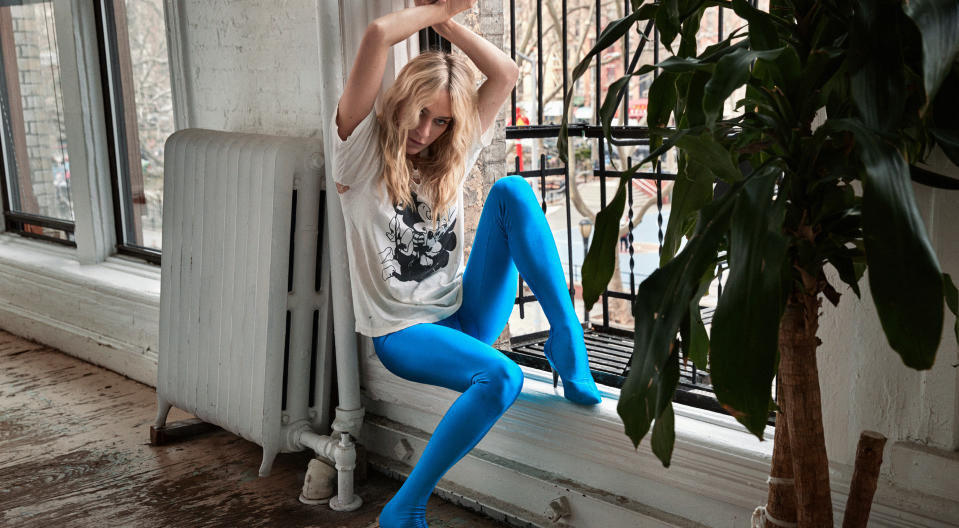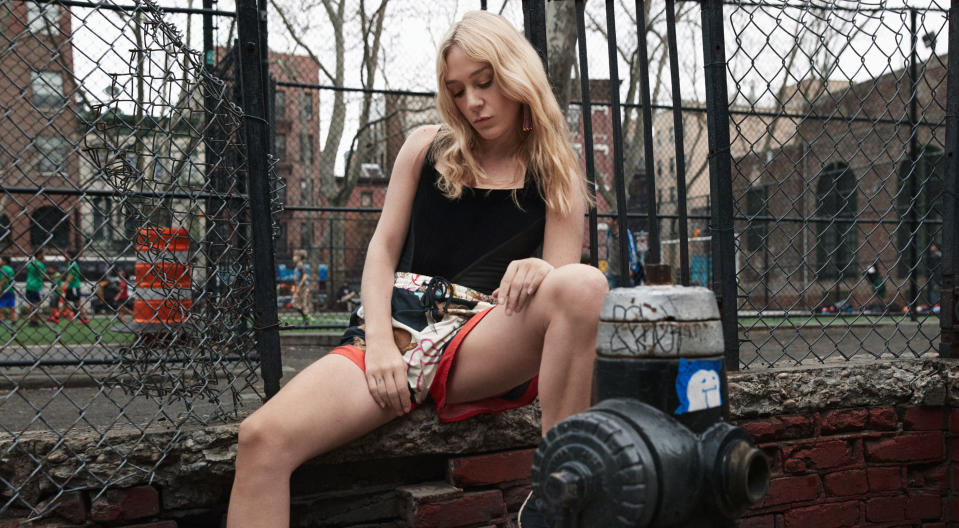Chloë Sevigny Talks Vintage Shopping, '90s Subculture, and Why People Can't Let Go Of Her Style

For over three decades, Chloë Sevigny has been described as 'cool.' Plucked off the streets of New York's East Village neighborhood, the actress got her start at Sassy Magazine at 17 years old (where she was once described as having more style in her little pinky."). Since then Sevigny has gone on to do just about everything: star in Sonic Youth music videos, become the patron saint of '90s Gen-X subculture, win a Golden Globe for her portrayal as a mormon polygamist in 'Big Love', write a book detailing her influential style, and make her directorial debut with 'Kitty', which closed out the 2016 Cannes Film Festival.
Now 42, it would seem Sevigny's status as in-demand fashion muse has yet to change. In partnership with Vestiaire Collective, a luxury resale e-retailer, Sevigny's curated a selection of designer goods ranging from secondhand Jean Paul Gaultier to impossible-to-find Maison Martin Margiela spandex pant-boots. We caught up with the uncompromising actress, vintage fiend, and all-around It-Woman to talk about the changing definition of cool, how people are "comforted" by her style, and why eBay just isn't her thing.

Tell me a little bit about your collaboration with Vestiaire Collective.
Funny enough, I'd never heard of their site before, being that I'm such a vintage hound and people are always trying to convince me of eBay. Whenever I go on eBay I'm just like 'ugh there's too much to sift through.' When they proposed doing something together I went on their site and I was like wow, this is like a really well curated eBay. It's so legit. We did the photo shoot together with Vanina Sorrenti who I love and adore and always wanted to shoot with, so that was pretty fun. Friends of mine [including director Shawna Ferreira] did a little film while we were shooting.
How important is it to you to shop vintage over brand new items?
It's really important and less important. It's just my thing that I've always done. It's like a way of life for me. I grew up thrifting with my mom and it was a thing we would do together. Instead of sending me to the playground she would bring me to the Yellow Balloon thrift store in Darien, Connecticut where I grew up. It's just something that was ingrained in me and still, that's mostly all I buy. I can rarely think of instances [where] I buy brand new clothing.
Do you have vintage white whales that you've always tried to find?
I did and then Mark [Haddawy from Resurrection Vintage] found it for me. It's this Gaultier sailor jacket with corseting in the back. I wanted it in black but he found it for me in navy. I had been scouring all over the world looking for it.
You're often seen as this pinnacle of '90s culture, particularly New York subculture. What do you think has changed about being "cool" since then? What's cool now verses what was cool then?
I think it is harder to ascertain; I don't know if anything is as cool anymore. Everything is like a white wash, everything feels the same. [It's] harder to determine authenticity for me. Especially with the young kids walking around-you can't tell what they're really into or what they're posing that they're into. When I was growing up, if you're wearing a certain thing you were really standing for something and it was easier to identify what people were standing for or were into music-wise or scene-wise. How you dressed was more an indication of that and your attitude towards it. Now it's very hard to tell. It feels like everyone is just posturing.
Like I saw a girl the other day, and thought to my self she's like a real weirdo. Suburban, alternative kid, she had like blue hair. I was like, oh my God that's so refreshing to see some kid that is actually like a true weirdo. The next day I saw her again and she had a modeling book with her. Not that that diminishes her being authentic at all, but I was kind of sad. Not that I didn't do that as a kid, I didn't have a modeling agency, I [modeled] randomly and mostly for Sassy Magazine but it's a different day and age. I feel like people are more commoditized because its easier it's just a barrage of information and images everywhere.
You mentioned people standing for something in the past. What were you standing for?
Just a rebel youth. Something that was anti-establishment.
Do you think that has changed as you've gotten older?
I guess it's kind of like cooled out a little bit. [My style] used to be a bit louder or a bit more over doing it, and now it's streamlining a little. I'm still into the whacky chunky shoe and whatever, but I feel like it's not as loud, maybe.

Why do you think people are so attracted to the way you dress?
God, I don't know but it's really annoying though [laughs]. No, it's not. Fashion is a big part of me and it's allowed me a lot of freedom in my life, especially with my first love which is film. I think people in the know, know that I don't work with a stylist for the authenticity. And lots of friends and lots of people in the industry [...] see my down time and how I really dress, and they feel a comfort there. And I don't know the magazines just latched onto me at a young age I think and I've kind of been something people didn't let go of.
Do you think It-Girls are different than when you were one back in the '90s?
I hope I was different than [other It-Girls]. I think people always going to latch onto a young person and project onto them and exploit them. That's just a continuous thing that has happened since the '20s with Clara Bow.
You Might Also Like

